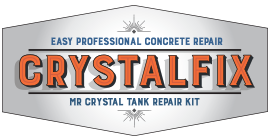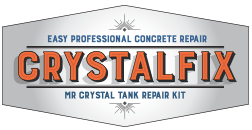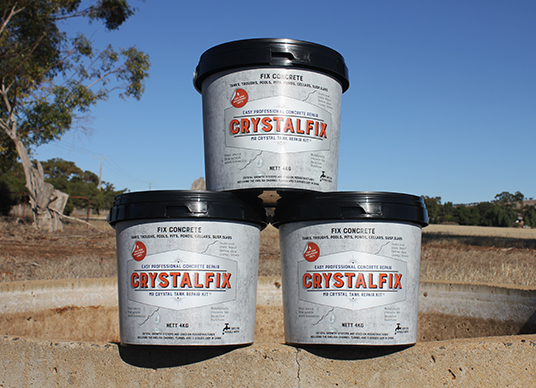Mr Crystal can be applied over or adjacent to cracks of concrete tanks, suspected weak points, cold joints, porous surfaces, around fittings. Mr Crystal can be applied to either side of the face of the concrete. Mr Crystal migrates through the voids in the concrete and will migrate usefully up to 400mm from the point of application. The resultant crystal growth is the waterproofing effect of this product. The raw product itself is not waterproof, in fact it is highly absorptive by design.
When applying Mr Crystal where there is flowing water, remember not to be too concerned that some product may wash off. It is important to focus on the intact material that hasn’t washed off to ensure that it is correctly applied, cured and stimulated. Allow some time for crystal growth to occur (a few days) then apply some more if needed.


